The No. 1 Sign There’s a Snake Behind Your Water Heater
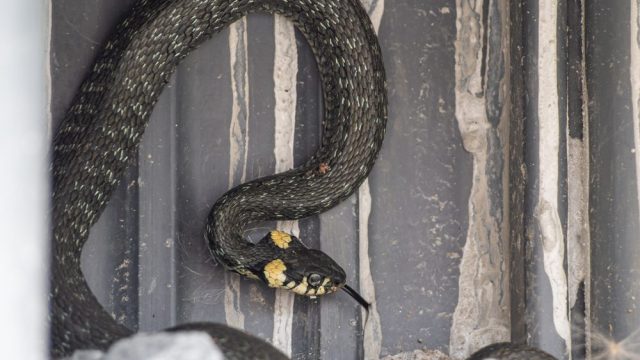
Anyone who’s a homeowner knows that snakes are bound to make their way into your yard and outdoor areas of your home eventually. Sometimes, they can even make it into unexpected areas where they don’t belong, like your garage or even your car. But in other cases, whether they’re looking for a meal or they’ve taken a wrong turn at the garden hose, snakes can work their way into some places they really don’t belong in your house. And as naturally gifted hiders, there’s a good chance they could end up tucking themselves away behind one of your most vital home appliances. Read on to see what experts say is the top sign that there’s a snake hiding behind your water heater.
READ THIS NEXT: If You Live Here, Watch Out for Escaped Snakes and Other Reptiles.
Water heaters can make a perfect hiding place for snakes for a few reasons.
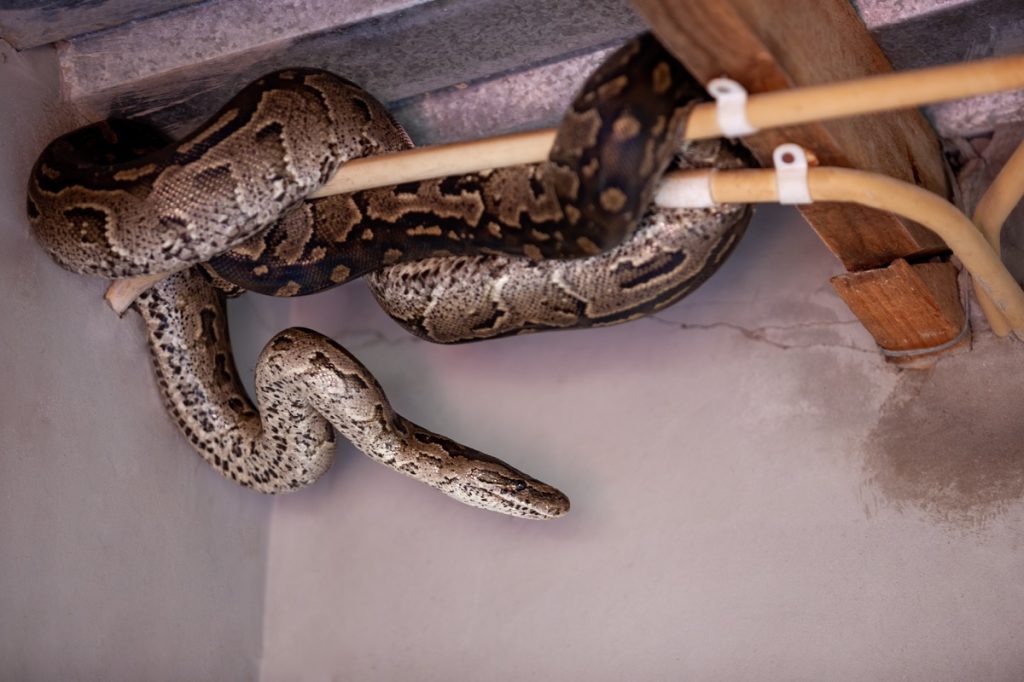
Few places around the house are quite as perfect for a snake to get comfortable as a basement. Besides being one of the easiest areas for them to access through a crack or hole, they also allow them to lay low and potentially hunt any pests you may be housing. But as cold-blooded animals, snakes are also attracted to your home’s water heater for the same reason you rely on it.
“Because snakes are ectotherms, they are dependent on their environment to regulate body temperature,” Alex Flatt, regional service manager for Trutech Wildlife Service, tells Best Life. “They’re attracted to water heaters because of the warmth.”
“Snakes also generally go to great lengths to avoid humans,” he adds. “And as a heavy appliance often tucked in a corner, they provide the heat source they’re looking for and a hiding space all in one.”
Experts say there’s one dead giveaway that a snake has made its way behind your water heater.
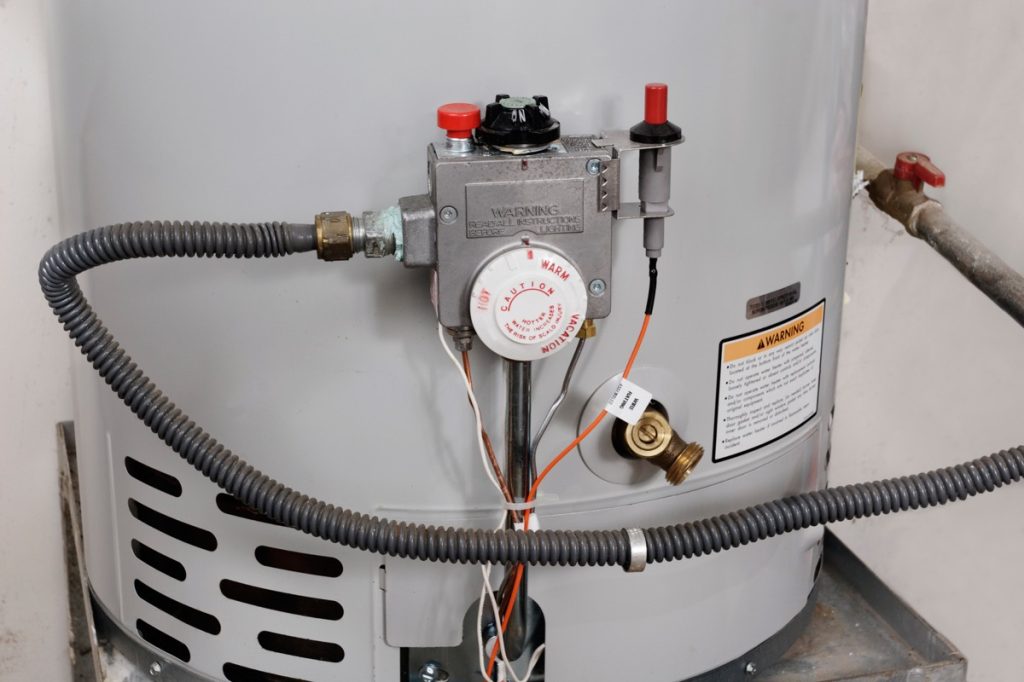
As silent, stealthy creatures, it can be hard to tell when a snake has made its way into your home—especially if it’s hiding in an area as remote as your basement. But experts say you should still keep an eye out for one clue that a reptile is using your appliance as a makeshift shelter.
“Besides the most obvious signs of actually seeing a snake behind your water heater, finding shed snake skin is usually the top sign there’s one around,” says Flatt. He adds that most snakes shed their skin only a few times a year, meaning that finding signs of this biological process means one has been camped out for some time.
RELATED: For more up-to-date information, sign up for our daily newsletter.
There may be more immediate clues lying around that a snake has been nearby.
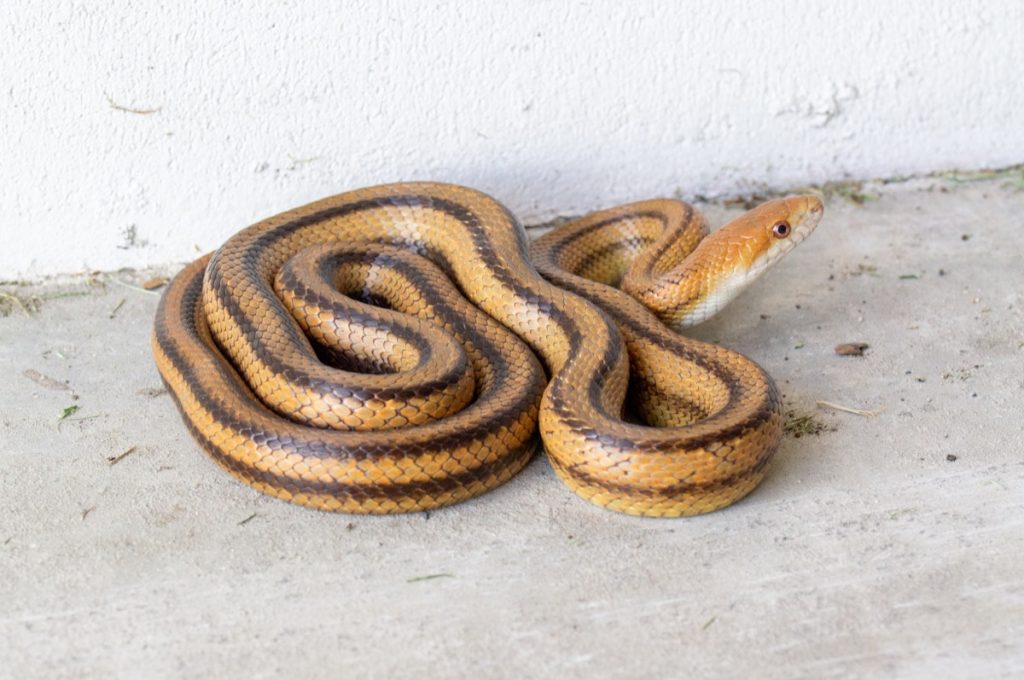
But even if you don’t catch sight of their sloughed-off scales, experts you can still tell when a reptile has been around with a keen eye. Fortunately, basements can make picking up another type of clue even easier.
“Since people rarely clean out behind their water heater, it can become dusty back there. One clear sign that a snake is hiding behind your water heater is if you see slither markets through the dust,” Nick Durieu of Senate Termite & Pest Control tells Best Life. “This can indicate that a snake has made itself comfortable back there and is hiding out in the dark, humid corners behind your appliance.”
And when all else fails, there is still one other irrefutable sign snakes leave behind, just like all other members of the animal kingdom. “Keep an eye out for snake feces, which are dark brown or black solid logs that often have a urea cap on one end,” John West from Alamo Termite & Pest Control previously told Best Life. “They can also leave behind regurgitated food, which can happen if the snake gets disturbed.”
You can reduce the likelihood of a snake making itself at home with a few simple steps.
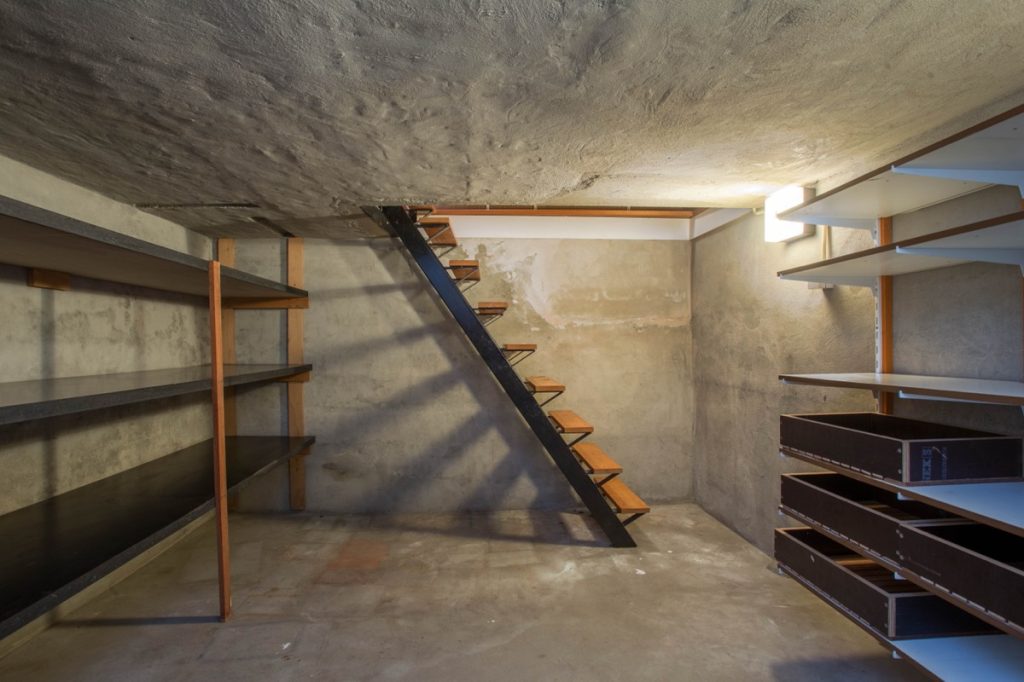
Like other unwanted houseguests, keeping snakes out of your living quarters is something that is best handled proactively. In this case, experts say that means ensuring you’re not providing an endless buffet fit for a reptile.
“If a customer has pests such as bugs and rodents, this is a constant food source for snakes and draws them into the home,” Dan Sherrin of Professional Exterminating previously told Best Life. “Routine cleaning, decluttering, and pest control removes their food source and hiding spots, making it much less likely to find snakes in your home.”
It can also pay to stay on top of home maintenance, especially regarding the upkeep of the foundation or outer walls. “Snakes can get into your home through a gap the size of a pencil,” Nancy Troyano, PhD, a board-certified entomologist with Ehrlich Pest Control, previously told Best Life. “It’s important to close up any holes, cracks, or crevices in the home, especially near the crawl space. Drainage areas are a perfect entry point for snakes.”